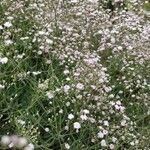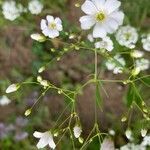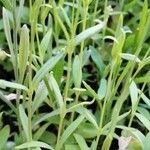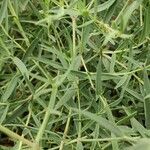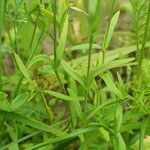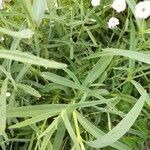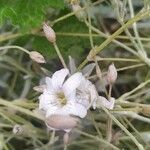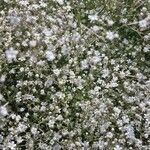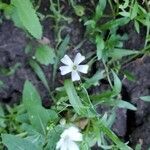Glabrous annual up to 60 cm. Stems erect, branched in upper part. Leaves linear to linear-narrowly elliptic, acute, 10-50 by 2-10 mm. Inflorescence a loosely branched panicle with rather large flowers; bracts triangular, scarious. Pedicels capillary, 10-35 mm. Calyx 3-5 mm, campanulate, divided to halfway down, with ovate, obtuse teeth. Petals white, often with dark veins, 6-12 mm, cuneate, emarginate. Capsule ellipsoid, 3-4.5 mm, longer than calyx. Seeds c. 1 mm, black, rugose, with obtuse tubercles.
Another annual sp. native to se. Europe and Asia Minor, occasionally escapes from cult. in our range. It is larger than G. muralis, commonly 2–5 dm, with larger lvs mostly 2–4 cm × 3–10 mm, a broader, more campanulate cal, shorter, more globose capsule, and 12–24 ovules.
